In summer 1943, the allied assault against Axis-held Europe began. The first step was done in Sicily, where a bloody battle raged on between July and August.
Prelude
In January 1943, during the Casablanca Conference, Allied leaders decided that Sicily would have been their next target after the complete defeat of Axis forces in North Africa. This operation was meant to open the “second front” repeatedly requested by Stalin to Western leaders. In addition, the choice to invade Sicily was motivated by two other main reasons: 1) Finally ensuring the safe passage to allied convoys across the Sicilian channel, and 2) Dealing a fatal blow to Italy, eventually forcing it to exit the war.
In early May 1943, during the closing days of the Tunisian campaign, the Allied air offensive started targeting the small Italian island of Pantelleria, which posed a threat to the allied invasion force due to its position. The island hosted an airfield with a protected hangar, radar stations (delivered by Germany), coastal defences and a garrison of around 11.000 men.
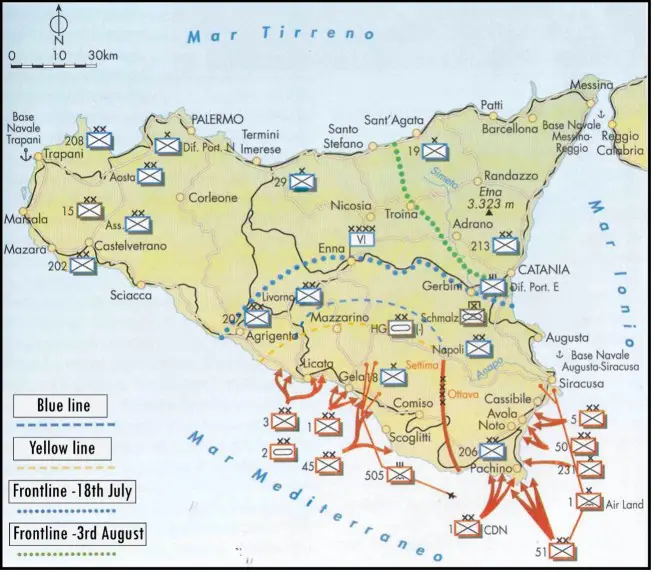
Map of Operation Husky (A. Saccoman)
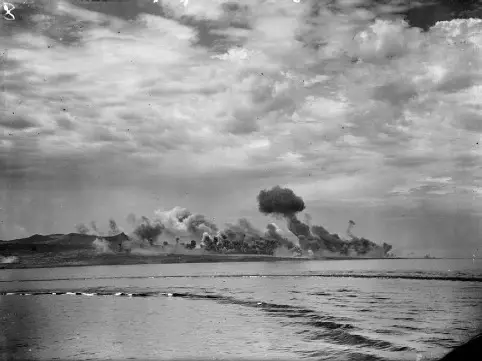
Pantelleria under aerial bombardment
The island was bombed for almost a month and in the first days of June became subject also to naval bombardment. With the airfield unserviceable, the Regia Aeronautica ordered the transfer of the remaining fighters to Sicily. Short of supplies and, most importantly, water, the commander of the garrison, Admiral Gino Pavesi surrendered to the Allies on the 11th of June. He received permission to do so (although a bit late) from Mussolini. From the 8th of May till the 11th of June, Axis fighters had flown almost 1.200 sorties over Pantelleria, against around 1,700 allied ones.
With Pantelleria secured, together with the small islands of Lampedusa, Lampione and Linosa, the Allies could now focus on Sicily. In the ten days before the scheduled invasion (10th July), American and British bombers hammered the Sicilian airfields. Before the start of the bombing campaign, there were 359 Italian and 400 German aircraft available. The Italians deployed a wide mix of aircraft, including M.C. 202 and (few) M.C. 205 fighters, C.R.42, Re.2002 and Ju.87 for ground attack and a handful of three-engine bombers. On the 9th July, the Regia Aeronautica registered the loss of 220 machines on the airfields and 53 shot down in combat. Meanwhile, the Luftwaffe lost 93 machines.
Axis deployment
The Italian ground forces in Sicily consisted of the 200,000 men of the 6th army, commanded by General Alfredo Guzzoni, and divided into two army corps deployed in the western (XII) and the eastern (XVI) part of Sicily. Most of the 6th army consisted of 5 “coastal” divisions (Divisioni costiere) and 3 “coastal” brigades. These units were formed by local conscripts of older age if compared to the regular troops. In addition, they were poorly trained and poorly armed, lacking any form of motorization and being capable only of static defence. The 6th army could count also on four regular Infantry divisions, Livorno, Assietta, Napoli and Aosta, they too lacked motorization, with the partial exception of the Livorno division, which was relatively better equipped. There were also various support units, most notably a mobile Arditi battalion (Italian stormtroopers) two battalions equipped with Semoventi 47/32, two battalions equipped with captured French tanks (Renault R.35), a group of excellent Semoventi 90/53 and even a battalion of extremely outdated Fiat 3000 tanks, used as machine gun nests.
The German forces amounted to 30,000 men, two Panzergrenadier divisions (15° and 29°), the armoured division Herman Goring (with a company of Tiger tanks available) and the 1st Fallschirmjager division (not fully deployed yet).
Operation Husky
In the last hours of the 9th of July, allied airborne units started to descend on Sicily, their main goal was to create chaos in the axis lines and prevent or delay any counterattack against the beachheads. These operations faced several difficulties, and the paratroopers were scattered in wide areas but did not fail to interfere with Axis moves.
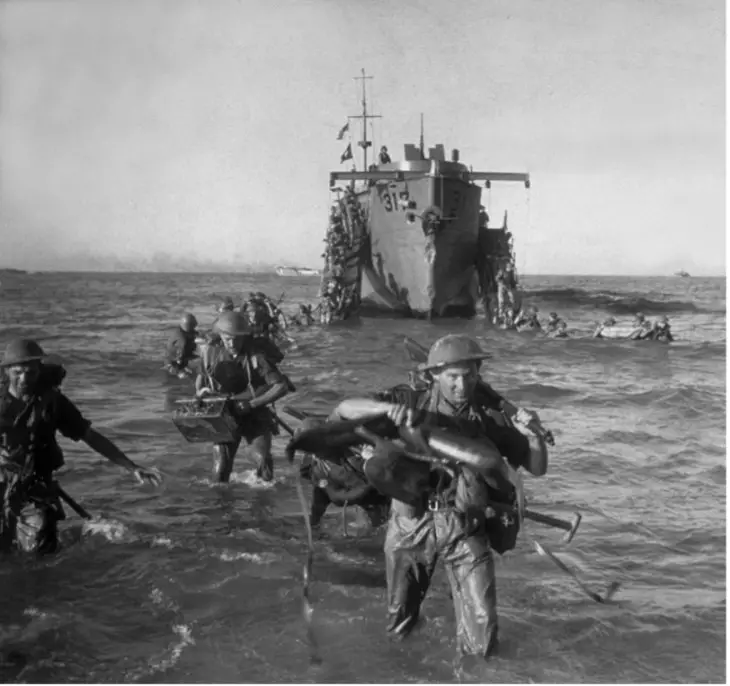
Soldiers of the 8th Army during the landing
In the morning of the 10th, the allied naval armada arrived off the Sicilian shores and commenced the bombardment. The American 7th Army landed with three divisions on the shores around Gela while the British 8th Army landed with four divisions between Pachino and Syracuse. The strategic objective was the port city of Messina, situated in the north-eastern corner of the island. The 8th army was tasked with the capture of Messina, advancing northwards on the Eastern part of Sicily while the Americans should have covered the British left flank and kept busy a portion of the Axis forces.
The Italian coastal units were the first to get in contact with Allied forces, namely the 206th division against the British, and the XVIII Brigade near Gela against the Americans. These poorly armed and non-mobile units were easily routed by the overwhelming landing forces, supported by massive incursions of fighters and bombers.
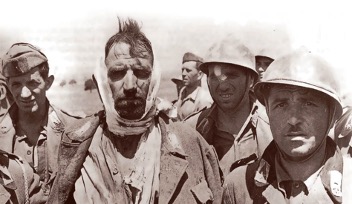
Captured soldiers of a “Costal” division, note the WW1 helmets given to this second line units
The first reactions from the axis side came from the Regia Aeronautica, in the morning of the 10th, 13 CANT Z 1007 bombers attacked the allied ships near the beachheads, followed later by other scattered units, totalling 500 sorties in that first day. Some ships and landing crafts were hit but these results could not stop the invasion. In the desperate attempt to counter the invasion, the Regia Aeronautica called reinforcements from mainland Italy, 45 G.50 arrived from Tuscany, 8 Re.2005, 8 M.C. 202, 32 Re. 2002 and 10 M.C.205 arrived from Lazio, 15 C.R.42 and 14 Ju.87 arrived from Sardinia while 11 S.M. 84 arrived from Lombardy.
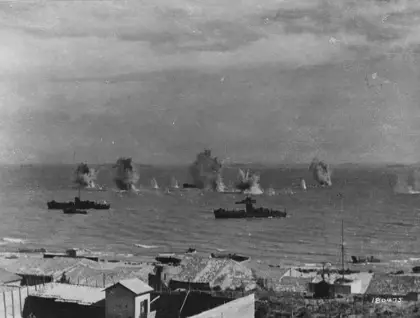
Allied landing crafts under Axis air attacks
On the 11th of July, the Axis ground forces launched their counterattacks against the American beachhead around Gela, this was meant to be coordinated action between the Livorno and Herman Goring divisions, descending on Gela from the north-west and north-east respectively. The counterattacks pushed back the Americans and the axis forces came in sight of the landing areas. At this point, the Americans requested naval support and the 152mm artilleries of the Cruiser USS Savannah hammered the advancing axis forces. A handful of Italian R35 tanks, that survived the naval shelling, entered Gela from the north. Here, they were met by American rangers armed with bazookas and anti-tank guns. This valiant armoured ride turned into a massacre.

Soldiers of the Livorno division during the counterattack
West of Gela, near the town of Licata, the 3rd American division faced a counterattack by two Italian tactical groups consisting of Bersaglieri units and self-propelled guns (including the Semoventi 90/53) led by General Enrico Francisci, who later died while giving orders on top of a Semovente.

An Italian R.35 tank knocked out near Gela
To the east, the Napoli division attacked the British beachheads near Syracuse but faced overwhelming firepower and enemy units, forcing a withdrawal at the end of the day.
With casualties ramping up quickly (2,100 just in the case of the Livorno division), the Axis forces pulled out. The beachheads were finally safe, and the Allies could start their advance into Sicily.
In part 2, we will see how the operations went on until the end of the campaign.
Sources
Alegi, G. (1994). Le operazioni in Tunisia e nell’Italia meridionale: l’aspetto aereo. L’ Italia in guerra: il quarto anno – 1943 (parte prima), 53-82.
Gay, G. (1994). La fine delle operazioni in Nord Africa, lo sbarco alleato in Sicilia e nell’Italia meridionale. L’ Italia in guerra: il quarto anno -1943 (parte prima), 25-32.
Giovanni Massimello, G. A. (2000). Italian aces of WW2. Osprey Aviation.
Jowett, P. (2019). L’esercito italiano nella seconda guerra mondiale. LEG edizioni.
Saccoman, A. (2007). La campagnia d’ Italia.
Sicurezza, R. (1994). Le operazioni in Tunisia e nell’Italia meridionale: l’aspetto navale. L’ Italia in guerra: il quarto anno – 1943 (parte prima), 33-52.